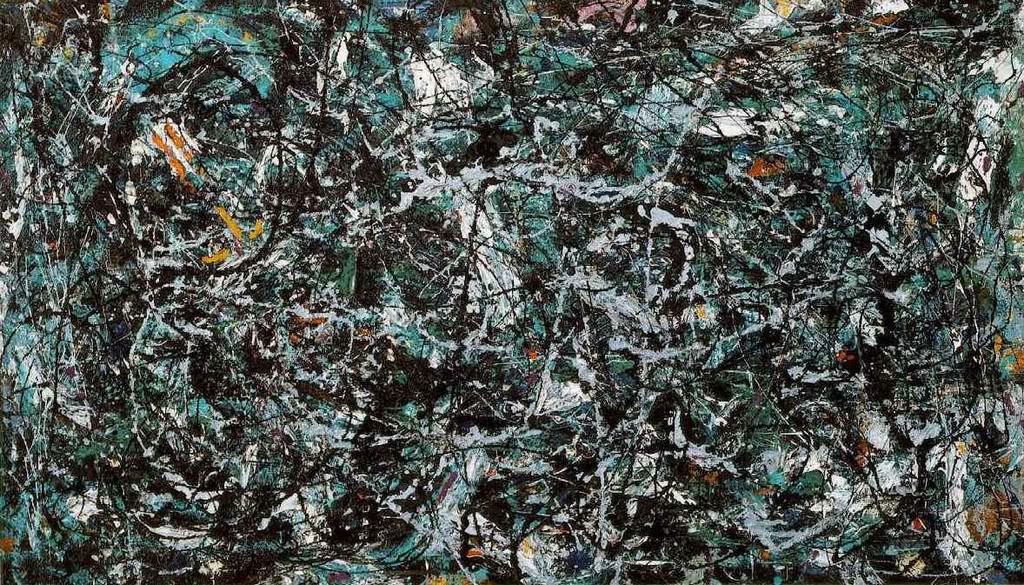Cards In This Set
| Front | Back |
|
The two major points in history that effected art in this time
|
|
|
Jackson Pollock
|
Abstract Expressionism
He was influenced by Carl Jung, surrealism (1920s), and Picasso (also influenced by surrealism). In his work he uses strong black and white rhythm and a repetitive structure. Also uses handprints to convey his personal identity and a primative nature. His work transcends his time and place. |
 |
Jackson Pollock
Autumn Rhythm 1950 Enamel on umprimed canvas |
 |
Jasper Johns
Three Flags, 1958 Encaustic on canvas Johns experimented with paint and technique He did not label his work |
 |
Jackson Pollock
Male and Female, 1942 Oil on canvas |
|
Surrealism
|
Influenced by Freudian theory especially expressing the unconscious mind (suppressed thoughts /feelings) and dream analysis.
Automatic drawing (drawing w/o thinking) works to express your unconscious |
|
Peggy Guggenheim
|
Supported Surrealism and the work of young American artists like Pollock
She was the first person to exhibit Pollock's work at the Art of this Century Gallery |
|
Carl Jung
|
Influenced Jackson Pollock with his theories that we all have a male and female within us but we are messed up because we express too much of one.
Collective unconscious is made up of archetypes (universal element) which is what Pollock wanted to achieve |
 |
Jackson Pollock
Full Fathom Five, 1947 oil on canvas with nails, tacks, etc. Is dense with layers and is his first fully abstract work. The title refers to a poem in Shakspeares The Tempest. |
 |
Jackson Pollock
Number 1A, 1948 oil and enamel on canvas Pollock starts working larger and spreading the canvas out on the floor and moves around it. He cuts down the composition to a rectangle after he paints so that he chooses where things get cut off. He puts his handprints into painting (form of identity). He is unconscious in how he works. |
 |
Hans Namuth
Photos of Pollock painting, 1950 He documented the process of Pollocks work through photos and also a film in 1951. Pollock wants to express rather than illustrate and he says he has complete control of the paint. |
 |
Life magazine spread of Jackson Pollock
August 8, 1949 He got a good and bad review Is depicted very manly and tough (arms crossed, cigarette hanging out of mouth) |
|
Robert Rauschenberg
|
(1950s) ready made, collage, combine painting of collaged material.
Dada, Duchamp revival during this time. De Kooning - abstract expressionist artist that did not create fully abstract art but of the female body during this same time (1953) |
 |
Robert Rauschenberg and Susan Weil
Untitled (Double Rauschenberg) 1950-51 monoprint (exposed blueprint paper) made on the floor (like Pollock) with his own body as a means to make fun of abstract expressionism These were put in a life magazine article |
 |
Robert Rauschenberg
Erased de Kooning drawing, 1953 Traces of ink and crayon on paper with mat and hand lettered label in gold leaf frame plays with the idea of at what does the art become your own |



